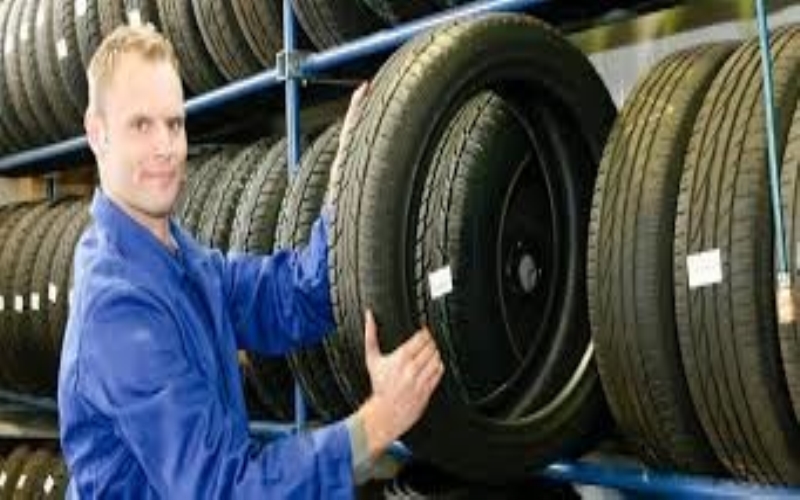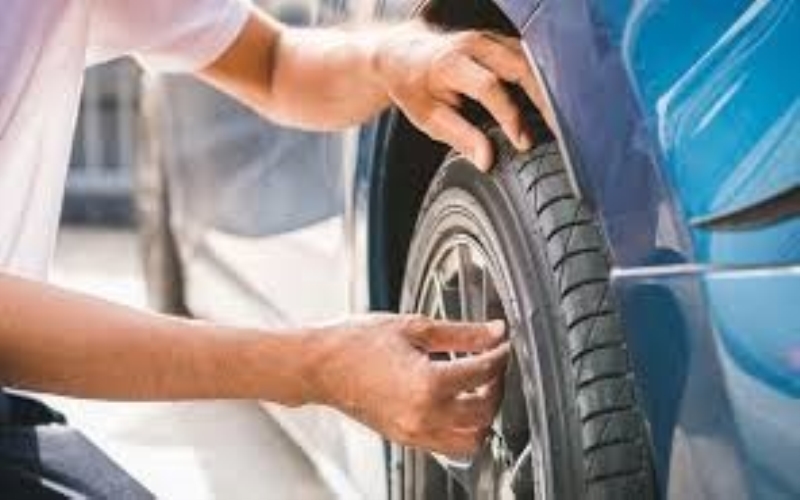When it comes to your Mercedes, safety is paramount. Among the many components that contribute to its safety, your tires are perhaps the most critical. Properly maintained tires not only ensure optimal performance but also enhance the safety of your Mercedes on the road. In this guide, we’ll delve into the importance of tire safety for Mercedes vehicles and provide you with comprehensive steps to inspect your tires for optimal performance and safety.
Why Tire Safety Matters for Mercedes Vehicles
Mercedes vehicles are engineered to deliver exceptional performance and handling, and tires play a crucial role in achieving these standards. High-performance tires are designed to provide excellent grip, stability, and braking performance, especially at high speeds. Ensuring the safety of your Mercedes starts with maintaining your tires in excellent condition with the help of some Best Tyre Shop in Dubai.
Signs of Tire Wear and Damage
Tires are like shoes for your car, and just like shoes, they wear out over time. Knowing the signs of tire wear and damage can help keep you safe on the road. Here are some simple things to look for:
Tread Depth:
Tread depth is how deep the grooves are in your tire. These grooves help your tires grip the road. You can check the depth with a special tool or even a coin like a penny. If the grooves are so shallow that you can see the top of Lincoln’s head on the penny when you stick it in, it means your tires are worn out and need to be replaced for safety.
Signs of Cracks and Bulges on Tire Sidewalls:
Spotting cracks and bulges on your tire’s sidewalls is like noticing warning signs on the road. Cracks weaken the tire’s structure, while bulges indicate potential internal damage, both raising the risk of tire failure. Seeking a professional inspection promptly is crucial to tackle these concerns and ensure safe travels.
Uneven Wear:
If the tread on your tires wears down unevenly, it can affect how your car handles. Look for areas where the tread is more worn on one side of the tire than the other. This can happen if your wheels are out of alignment or if your suspension is worn out.
Punctures and Cuts:
Punctures and cuts in your tire’s tread or sidewall can cause air leaks and weaken the tire’s structure. Even small punctures can lead to gradual air loss over time, affecting your tire’s performance and safety. Regularly inspecting for and addressing punctures and cuts is essential for maintaining tire integrity and preventing potential blowouts on the road.
Vibrations and Noises:
Vibrations in the steering wheel or seat and unusual noises like thumping or thudding while driving may indicate tire-related issues. These symptoms often suggest problems with tire balance, alignment, or internal structural integrity. Addressing these vibrations and noises promptly can help ensure a smoother and safer driving experience.
Watching out for these signs of tire wear and damage can help you stay safe on the road. If you see any of these signs, it’s important to get your tires checked by experts to make sure they’re okay. Your safety is really important! At Mercedes Auto Garage Dubai, we’re here to help. Our team of experts can check your tires and make sure everything’s good to go, so you can drive with peace of mind.
Steps to Inspect Mercedes Tires
Regular tire inspections are essential for maintaining the safety and performance of your Mercedes vehicle. By following these simple steps, you can ensure that your tires are in optimal condition and address any issues before they escalate:
Visual Inspection:
- Start by visually inspecting your tires for any signs of wear, damage, or abnormalities.
- Check the tread depth by looking at the tread wear indicators or using a tread depth gauge. Ensure that the tread depth meets the minimum requirements specified by the manufacturer.
- Look for uneven wear patterns, such as feathering, cupping, or camber wear, which may indicate alignment or suspension issues.
- Examine the sidewalls for cuts, bulges, or punctures, which can weaken the tire’s structure and increase the risk of a blowout.
Tire Pressure Check:
- Maintaining proper tire pressure is crucial for optimal performance, fuel efficiency, and safety.
- Use a tire pressure gauge to check the air pressure in each tire, including the spare tire.
- Refer to the tire pressure specifications provided by the manufacturer, which can usually be found on a sticker inside the driver’s door jamb or in the owner’s manual.
- Inflate or deflate the tires as needed to match the recommended pressure levels. Avoid overinflating or under inflating, as it can lead to uneven tire wear and reduced traction.
Tire Rotation and Balancing:
- Regular tire rotation and balancing help promote even wear and extend the life of your tires.
- Follow the recommended rotation intervals provided by the manufacturer, typically every 6,000 to 8,000 miles.
- When rotating your tires, switch them from front to rear and from side to side to ensure even wear across all four tires.
- Have your tires balanced during rotation to eliminate any imbalances that could cause vibrations and uneven wear.
Alignment Inspection:
- Proper wheel alignment is essential for maintaining stable handling, steering response, and tire wear.
- If you notice uneven tire wear or experience steering drift or pulling, it may indicate a need for wheel alignment.
- Have your wheel alignment checked by a professional technician using specialized equipment to ensure that the wheels are properly aligned according to the manufacturer’s specifications.
Check for Wheel Damage:
- Inspect the wheels for any signs of damage, such as dents, cracks, or bends, which can affect tire performance and safety.
- Look for corrosion or rust around the wheel rims, which can cause air leaks and tire damage over time.
- Ensure that the wheel bolts or lug nuts are properly tightened to the specified torque to prevent wheel vibration or loss.
Regular tire inspections are vital for maintaining the safety, performance, and longevity of your Mercedes tires. By following these steps and addressing any issues promptly with the help of some car mechanic, you can ensure that your tires provide optimal traction, handling, and comfort for a smooth and safe driving experience on the road.
DIY Tire Maintenance Tips for Mercedes Owners
As a Mercedes owner, taking proactive steps to maintain your tires can ensure optimal performance, safety, and longevity. Here are some do-it-yourself (DIY) tire maintenance tips to keep your Mercedes rolling smoothly:
Regular Cleaning:
Keep your tires clean by regularly washing them with mild soap and water. Use a soft-bristled brush to remove dirt, grime, and brake dust from the tire surface. Avoid using harsh chemicals or abrasive cleaners, as they can damage the tire rubber and degrade the tire’s appearance.
Proper Inflation:
Check your tire pressure at least once a month using a reliable tire pressure gauge. Refer to the recommended tire pressure levels specified by the manufacturer, which can typically be found on a sticker inside the driver’s door jamb or in the owner’s manual. Inflate your tires to the recommended pressure levels to ensure optimal performance, fuel efficiency, and safety.
Storage Considerations:
If you need to store your Mercedes for an extended period, consider removing the tires and storing them in a cool, dry place away from direct sunlight. Alternatively, you can use tire covers to protect the tires from UV rays, ozone, and other environmental factors that can cause premature aging and deterioration.
Tire Rotation:
Rotate your tires regularly to promote even wear and extend their lifespan. Follow the recommended rotation intervals provided by the manufacturer, typically every 6,000 to 8,000 miles. When rotating your tires, switch them from front to rear and from side to side to ensure uniform wear across all four tires.
Balancing and Alignment:
Have your tires balanced and aligned by a professional technician at least once a year or whenever you notice uneven tire wear or steering issues. Proper wheel balancing eliminates vibrations and ensures smooth, stable handling, while wheel alignment ensures that the wheels are properly aligned according to the manufacturer’s specifications.
Inspect for Damage:
Regularly inspect your tires for signs of damage, such as cuts, bulges, or punctures. Look for any foreign objects embedded in the tire tread and remove them carefully to prevent air leaks or tire failure. If you notice any significant damage or abnormalities, have your tires inspected by a qualified technician to determine if repair or replacement is necessary.
Tire Storage:
If you have a spare set of tires for your Mercedes, store them properly to maintain their condition. Store tires upright in a cool, dry place away from direct sunlight, heat sources, and moisture. Avoid stacking tires on top of each other, as this can cause deformation and damage to the tire sidewalls.
By following these DIY tire maintenance tips, you can ensure that your Mercedes tires remain in top condition, providing you with optimal performance, safety, and longevity for miles to come. Regular maintenance and attention to detail can make a significant difference in the overall driving experience and lifespan of your tires.
Your Mercedes is a precision-engineered machine, and its safety relies heavily on the condition of its tires. By following the steps outlined in this guide, you can ensure that your tires are always in optimal condition, providing you with the performance and safety you expect from your Mercedes.


